Snowflake Obsidian
Snowflake obsidian is a type of volcanic glass that contains inclusions of white, gray, or black snowflake like crystals.
It is formed when lava cools rapidly and solidifies before the crystals within the obsidian can fully form.
As the obsidian cools, tiny particles of a mineral called cristobalite form and arrange themselves in a snowflake like pattern, creating the distinctive appearance of snowflake obsidian.
Showing all 9 results
-
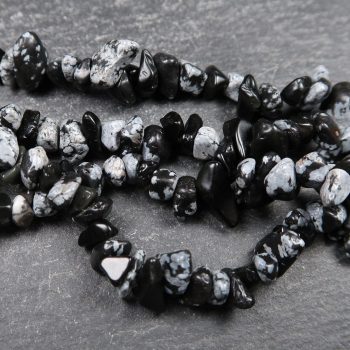
Obsidian bead strands (Snowflake)
£3.00 – £5.00 -
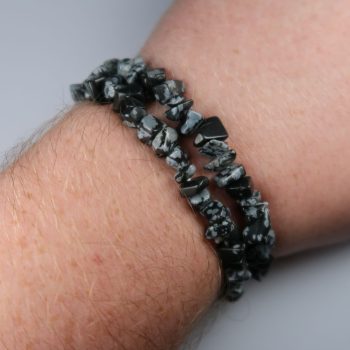
Obsidian Bracelets (Snowflake)
£2.95 -
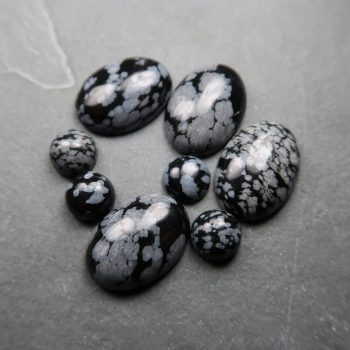
Obsidian Cabochons (Snowflake)
£0.85 – £7.00 -
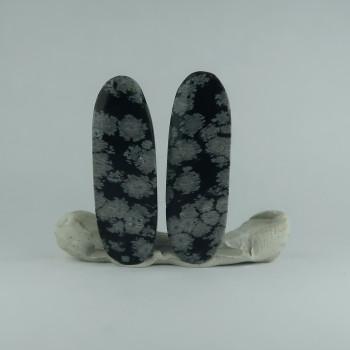
Obsidian Cabochons (Snowflake) (Pairs)
£7.50 -
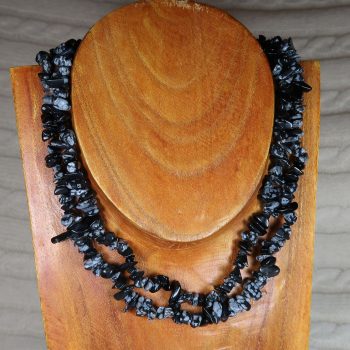
Obsidian necklaces (Snowflake)
£3.00 -
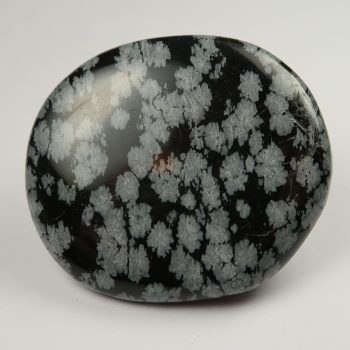
Obsidian Palmstones (Snowflake)
£3.00 – £4.00 -
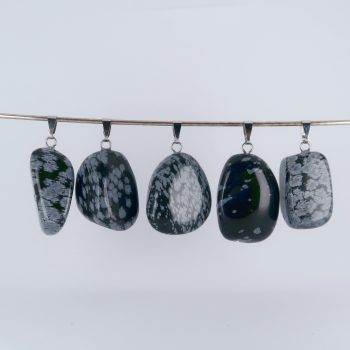
Obsidian Pendants (Snowflake)
£1.00 – £2.00 -
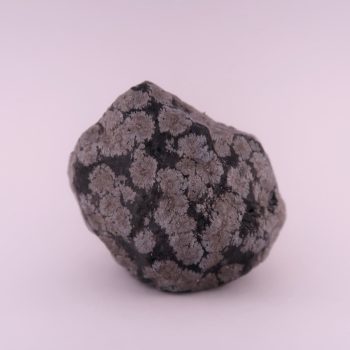
Obsidian Specimens / Rough (Snowflake)
£1.00 – £3.00 -
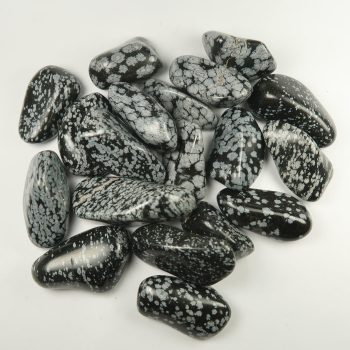
Obsidian Tumblestones (Snowflake)
£3.50
Information about Snowflake Obsidian
Appearance
Snowflake Obsidian is a variety of the volcanic glass known as Obsidian. It is always black, and contains inclusions of white-grey-brown Cristobalite, which can occur as radial crystals, circular blobs, spherulites, or semi random looking scattered blobs.
Uses and History
Other than being carved and polished, snowflake Obsidian has no uses in industry, it is purely decorative.
Native Americans and other ancient peoples were known to use Obsidian for cutting tools and arrowheads; it is possible some snowflake Obsidian may have been used but I am not aware of any archaeological finds making this distinction from regular black Obsidian.
Locales
Snowflake Obsidian can presumably occur anywhere where regular ‘black’ Obsidian can occur, but it doesn’t seem to be quite as common.
The two biggest sources I am aware of are Glass Buttes, Oregon, USA and Sevier Lake, Utah, USA. I have also heard of deposits being found in Mexico and Argentina but haven’t found too much reliable information on them.
Mineralogy
Hazards and Warnings
Can be very sharp!
Almost all rocks, minerals (and, frankly, almost all other substances on earth) can produce toxic dust when cutting, which can cause serious respiratory conditions including silicosis.
When cutting or polishing rocks, minerals, shells, etc, all work should be done wet to minimise the dust, and a suitable respirator or extraction system should be used.
Translations
Arabic:
- سبج ندفة الثلج
Hindi:
- स्नोफ्लेक ओब्सीडियन
Portuguese:
- obsidiana floco de neve
Bengali:
- স্নোফ্লেক ওবসিডিয়ান
Indonesian:
- obsidian kepingan salju
Punjabi:
English:
- snowflake obsidian
- cristobalite in obsidian
- cristobalite included obsidian
Italian:
- ossidiana fiocco di neve
Russian:
- снежинка из обсидиана
French:
- obsidienne flocon de neige
Japanese:
- スノーフレーク黒曜石
Spanish:
- obsidiana copo de nieve
German:
- Schneeflockenobsidian
Korean:
- 눈송이 흑요석
Thai:
- ออบซิเดียนเกล็ดหิมะ
Gujurati:
Mandarin Chinese:
- 雪花黑曜石
Urdu:
